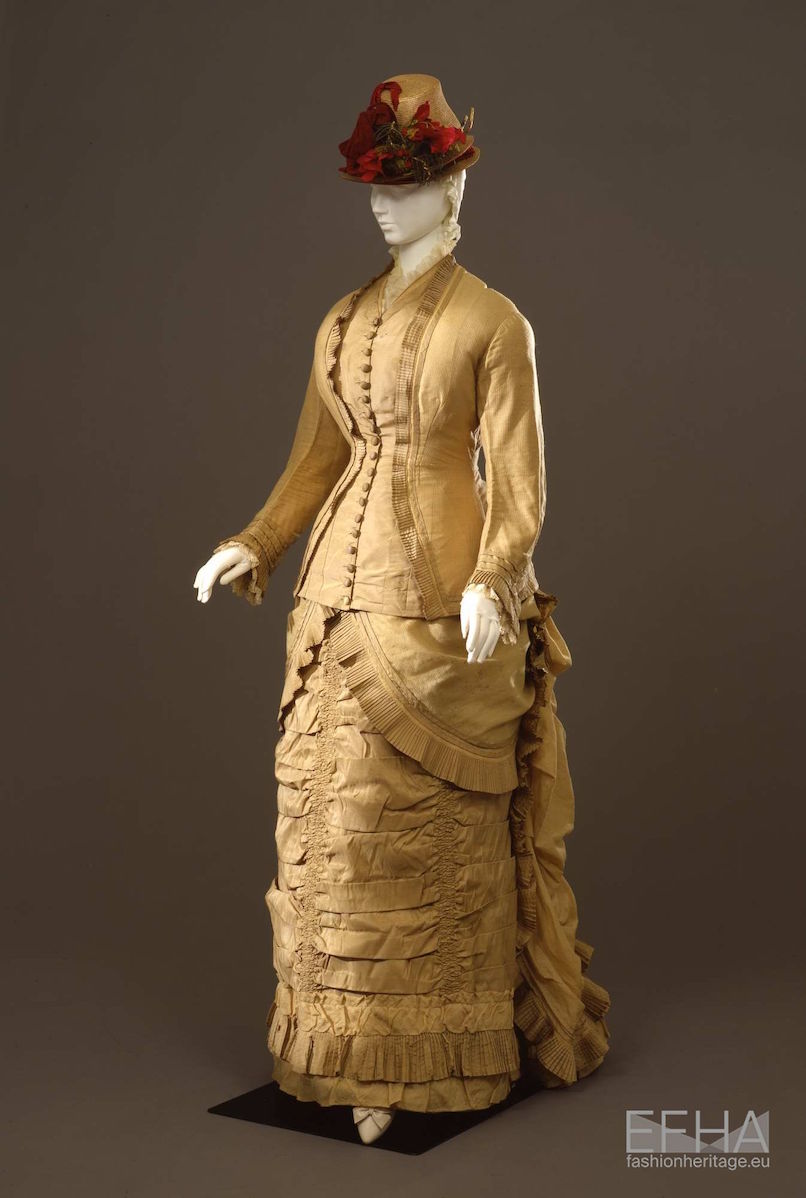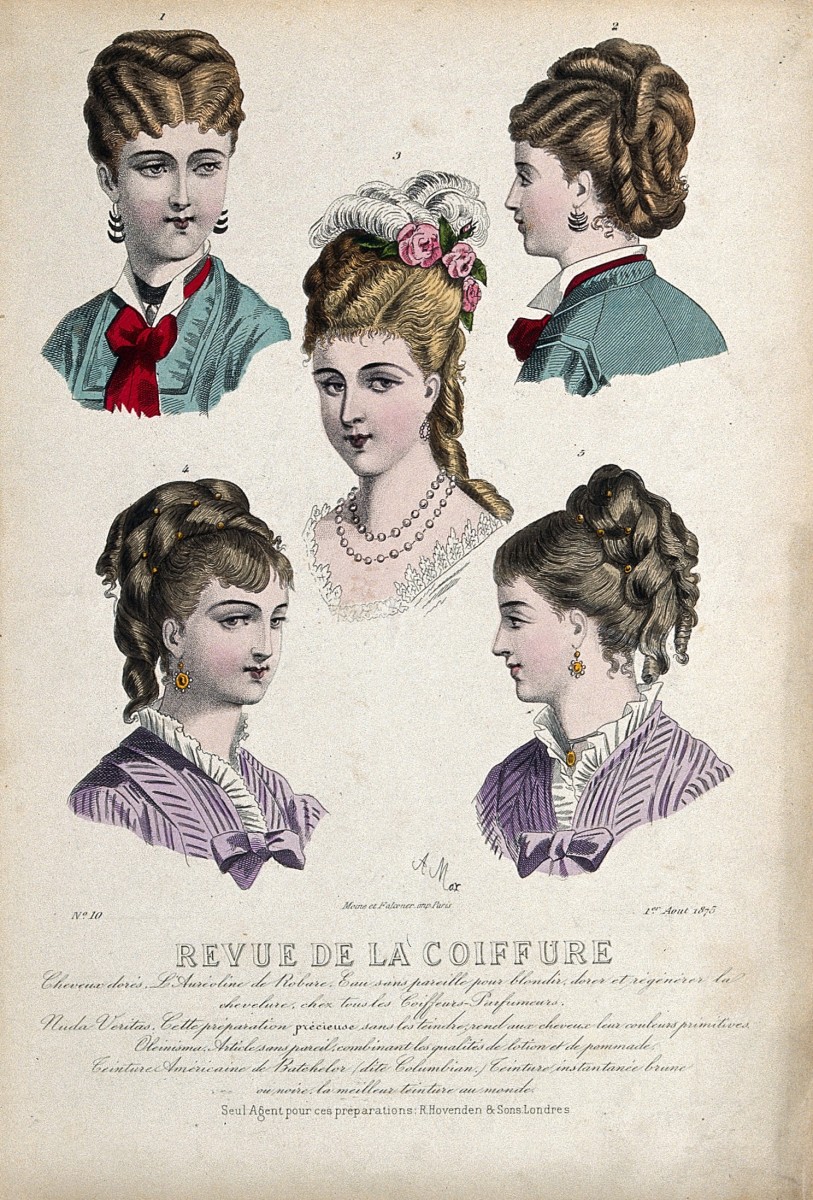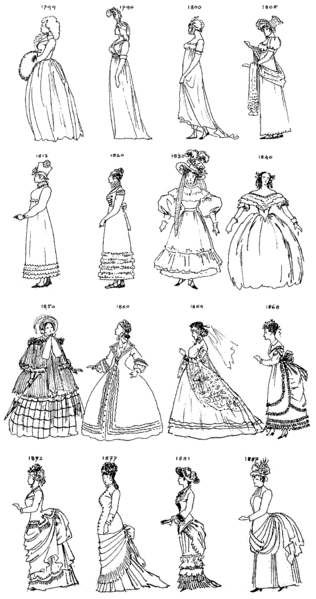Around 1880 there is already something to be seen about female emancipation. 1870s American bathing dress with.

Working Class Victorian Life Witness2fashion
WORKING-CLASS DRESSFor much of the period between the eighteenth century and the present most people in western countries could be characterized as working class.

. Walking dress of 1870 has a tiered and ruffled skirt back. The hourglass figure of the mid-19th century gave way to a longer slimmer silhouette with narrow skirts. The decade saw two distinct silhouettes in womenswear both maintaining the.
Many occupations and styles of living are encompassed ranging from independent skilled artisans in regular work to unskilled laborers or the unemployed. Romance was juxtaposed with practicality in sleek new styles. If one looks for example as navvies working on the railway they are wearing shirts waistcoats and neck ties.
The style of the early 1870s indications of which had been seen in the late 1860s relied on the revival of the polonaise drawn back bunched and puffed up into an elaborate arrangement at the rear over a supporting bustle or tournure. Advances in technology such as the sewing machine and aniline dyes and the rise of Parisian couture beginning with the House of Worth changed the fashion landscape. Manchester Operative Factory Worker 1842.
Work clothes were of course older and shabbier but on Sundays the workers would wear their Sunday best. Of course Tacoma would not have felt these fashion revolutions much at that time but in 1873 the trains first steamed into. Womens clothing of the 1870s and 1880s was heavily trimmed ornamental and draped.
The bodice and sleeves are lined with ivory linen. Subcultures as disparate as Hells Angels hippies punks and New Agers have often demonstrated their nonconformism by blending garments from a variety of sources including working clothes. The Rational Dress Society was founded in 1881 in reaction to the extremes of fashionable corsetry.
1870s womens fashion placed an emphasis on the back of the skirt with long trains and fabric draped up into bustles with an abundance of flounces and ruching. Astonishing amateur images which capture the fashion of women in London and Paris over a century ago. Walking dress of 1870 has a tiered and ruffled skirt back.
Mar 19 2016 - Explore Bec Banhams board Victorian Working ClassLower Class Clothing 1840-1860 followed by 181 people on Pinterest. In the 1870s womens dresses were elaborate and highly decorated while mens clothing remained simple and solemn. Women wore gowns with bustled skirts and bright or earth-toned colors intricately decorated with ribbons lace folds and ribbons a trend that would continue into the 1880s.
Tacomas prosperity was growing rapidly when the railroad arrived in the 1870s. The tight-fitting bodice was still short-waisted the. The shirtwaist was the new day wear staple.
Ive been working on an Edwardian dress for The litle mermaid Ariel. Many working-class women wore a soft hat called a mob-cap. This trend became fully realized in the 1870s with the focus of clothing concentrated at the back as skirts projected backwards and fell flat against the body in the front.
Women during this time wore elaborately designed dresses. Womens Fashion in the 1870s. The shape of the dress changed significantly during the 1870s and the bustle was most distinguishing feature of the new 70s fashion.
Womens fashions of the 1890s epitomized a new kind of woman. Ruffles and pleated frills are characteristic trimmings of the 1870s. In the 1970s many pioneer feminists adopted dungarees as a sartorial rejection of fashion and conventional gender roles.
The long lean line of the late 1870s was replaced by a full curvy silhouette with gradually widening shoulders. Emphasis on the back of the skirt grew from fabric gathered at the rear to the exaggerated shelf-like bustle of the mid 1880s. Hair was worn in sleek puffy up-dos.
This high protuberance at the back of the skirt carried on the 1860s trend toward flat fronts with extra material gathered in the back. Womens Fashion in the 1870s. The frontier city whose spot was first staked by Job Carr in 1865 was officially platted in 1869the year hoopskirts disappeared from high fashion.
What urban working-class men wore in the 1860s. Euryalus Sep 2 2013. An hourglass silhouette defined the feminine form and womens clothing lost some of the restrictive aspects.
The waist was lower in the 1870s than the 1860s with an elongated and tight bodice and a flat fronted skirt. Working Class Women 1900s. The excess that characterized the Victorian era continued with increasing exuberance during the.
The waist was lower in the 1870s than the 1860s with an elongated and tight bodice and a flat fronted skirt. Fashionable waists were low and tiny below a full low bust supported by a corset. Childrens fashion followed the trends of their mothers and fathers.
There is a long sleeve bodice an ribbon trimmed overskirt and a fully lined skirt. Gray figured silk three piece 1870s dress with brown and white woven flower sprays. What Victorian Agricultural Workers and Other Countrymen Wore.
1870s womens fashion placed an emphasis on the back of the skirt with long trains and fabric draped up into bustles with an abundance of flounces and ruching. Source for information on Working-Class Dress. Suits became popular for women.
If you wonder how the heck that works take a look at my. In the 1970s many pioneer feminists adopted dungarees as a sartorial rejection of fashion and conventional gender roles. 20th Century Fashion History 1900 1910 The Fashion Folks.
The front bodice fastens with hooks and has six. He decade of the 1870s is one of the most complex periods of womens fashion. If one looks for example as navvies working on the railway they are wearing shirts waistcoats and neck ties.
This gives a lot of emphasis on the back where the dress is decorated with multiple fold and bows. See more ideas about historical fashion historical clothing historical dresses. During the 1860s the cage crinoline allowed womens skirts to reach their apex in size while menswear relaxed into wide easy cuts.
1870 fashion plate shows jacket-bodices with draped and trimmed skirts in back. However these hoop skirts were flat in the front with no change in the back. Clothing For Working Class People 1920s 1900s 1950s Witness2fashion.
Just like their bosses. Ruffles and pleated frills are characteristic trimmings of the 1870s. Men in a dyeworks 1860s and 70s.
Low square necklines were fashionable.

1870 1879 Fashion History Timeline

The Bustle Era Women S Fashions Of The 1870s And 1880s Bellatory

Working Class Victorian Life Witness2fashion

Early 1870s Victorian Life Victorian Photos Victorian London

The Bustle Era Women S Fashions Of The 1870s And 1880s Bellatory



0 comments
Post a Comment